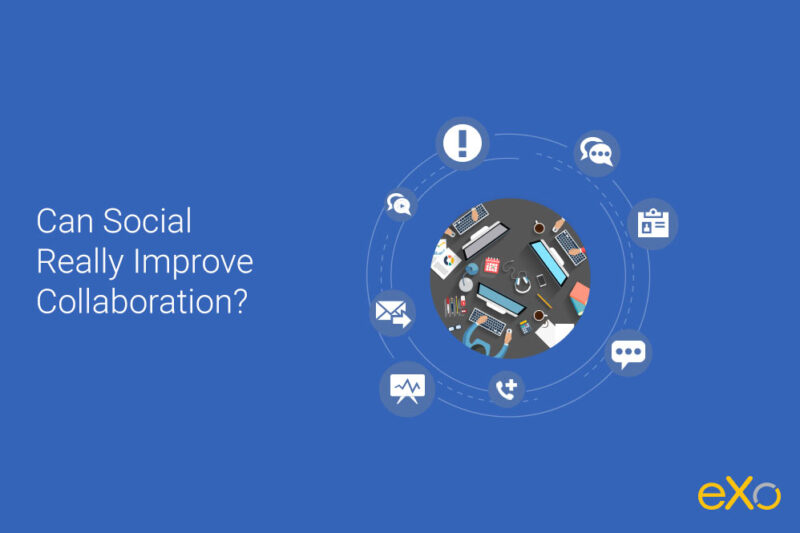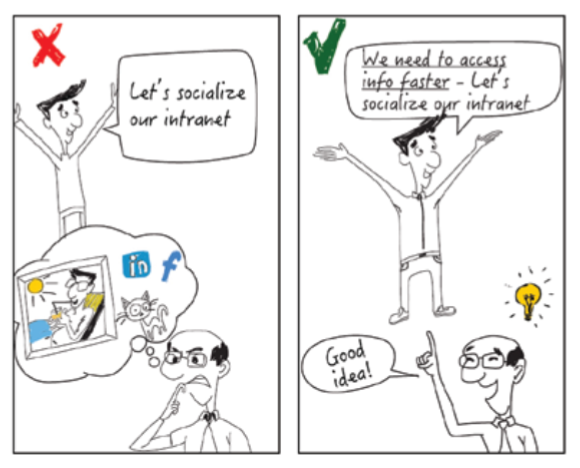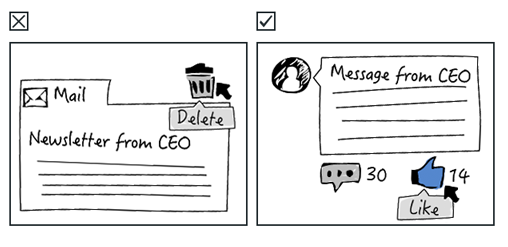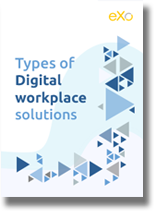- Marwen Mema
- November 1, 2016
Can Social Really Improve Collaboration?
Since the Enterprise 2.0 paradigm started to echo in the corporate world about a decade ago, some businesses have been experimenting with adding self-built social functionalities to their aging intranets and extranets.
Today, enterprise social networking has seen some evolution at a technological level, but the concept has essentially remained the same.

Content
Several software vendors thus began offering pre-built, dedicated enterprise social networking software for organizations interested in the benefits the mere implementation of such software promised.
Despite said advances and the new accessibility of this technology, numerous organizations still remained on the fence about this often-overhyped proposition, which seldom managed to address their concerns with value they could actually fit into their worldviews.
A recent study suggested that this is very much affected by the perceptual concerns of business users with regards to things like privacy and the free flow of information in so-called enterprise social networks.

Amid those that implemented enterprise social software are businesses that came to realize that implementation is by no means a sure path to automatic, wide-scale adoption by employees.
It is often the case that efforts to bootstrap adoption are still required, namely making sure employees know how to use it and making sure the social tools are implemented in a way that is actually useful to employees, that the value of these tools is made visible to them in light of their particular situations, and that adopting it is sufficiently championed from within and not from without.
In terms of the software itself, in order for it to bring said value, it needs to first have a clear purpose for being socialized.
Below are five areas in which digital collaboration software can exemplify this:
1. News feeds and communication threads
In the old days, the options for these were quite limited. One could publish news and announcements through either static web content on a traditional intranet site or in email lists.
When Enterprise 2.0 came along, RSS feeds to which users could subscribe were introduced. But contemporary social functionality added to certain corporate news feeds makes them even more dynamic and engaging to employees.

All of this could be organized based on workspaces or projects. An employee can then just focus on working on a new awesome corporate slide deck, for instance, and not focus on the visibility of his work to his teammates nor on constantly asking for updates about their activities.
2. Integration of comments and @mentions in all key areas
3. Notification channels
4. User directories and profiles
Buttons on profile pages, such as for adding the person to contacts or messaging them, can also be convenient.
5. Instantaneous communication
In our tech-centric times, instant messaging, which allows real-time collaboration, has become a powerful productivity and efficiency tool. Embedding this tool in your collaboration platform and making sure it integrates with your other collaborative apps instead of using it in isolation can only increase value.
So can social really improve collaboration? If the software in question implements social features sensibly in a way that enhances the productivity stack (or whatever the software’s core specialty may be) and makes it more useful and if the vendor can help key users understand and make the most out of this integrated experience, the answer is a resounding “Yes.”

FREE WHITE PAPER
Types of Digital workplace solutions
The modern workplace has evolved significantly in recent years, with advancements in technology, the growing number of tools …
FAQs
You will find here Frequently Asked Questions about collaboration with all the answers in one place.
What is collaboration?
Collaboration is “the situation of two or more people working together to create or achieve the same thing”.
What are the different types of collaboration in business?
Here are some definitions of digital workplace:
- Team collaboration
- Cross-departmental and interdisciplinary collaboration
- Community collaboration
- Strategic partnerships and alliances
- Supply chain collaboration
How to choose the best type of collaboration?
In order to effectively find the right type of collaboration for your business, you have to follow a strategic approach and answer three common yet critical questions: Where are we? Where do we want to be? And how to get there?
Why collaboration is important?
At the internal level, businesses try to encourage and seek to incorporate different forms of collaboration in the workplace to lay the foundations for teams to be able to work together with an aim to achieve higher levels of success.
Externally, businesses look to engage in collaborative actions to benefit from others’ expertise, to gather the opinions of their customer base and to get customers and other stakeholders more involved in the development of products and services.
What are the benefits of collaboration in the workplace?
Here are some of the benefits of collaboration in the workplace:
- Foster innovation and creativity
- Better problem solving
- Effectively handle times of crises
- Engage and align teams
- Increase motivation
- Attract talents
- Tags: Future of work, Collaboration, workplace
Related posts
- All
- eXo
- Digital workplace
- Employee engagement
- Open source
- Future of work
- Internal communication
- Collaboration
- News
- intranet
- workplace
- Knowledge management
- Employee experience
- Employee productivity
- onboarding
- Employee recognition
- Change management
- Cartoon
- Digital transformation
- Infographic
- Remote work
- Industry trends
- Product News
- Thought leadership
- Tips & Tricks
- Tutorial
- Uncategorized
Leave a Reply
( Your e-mail address will not be published)


